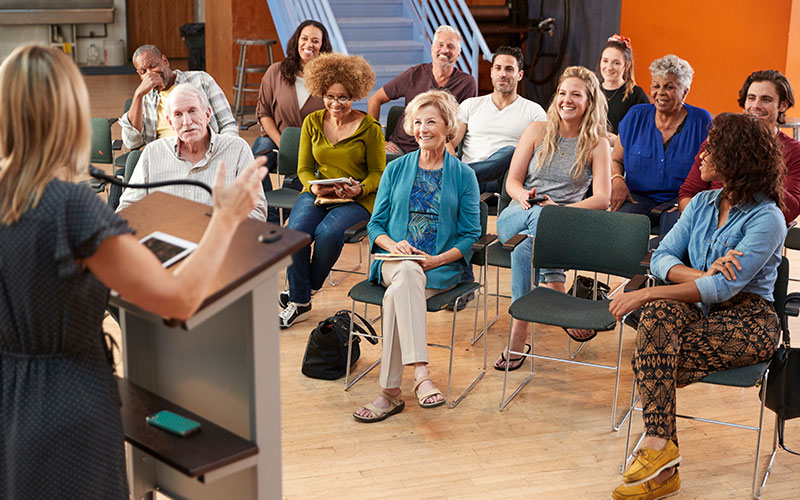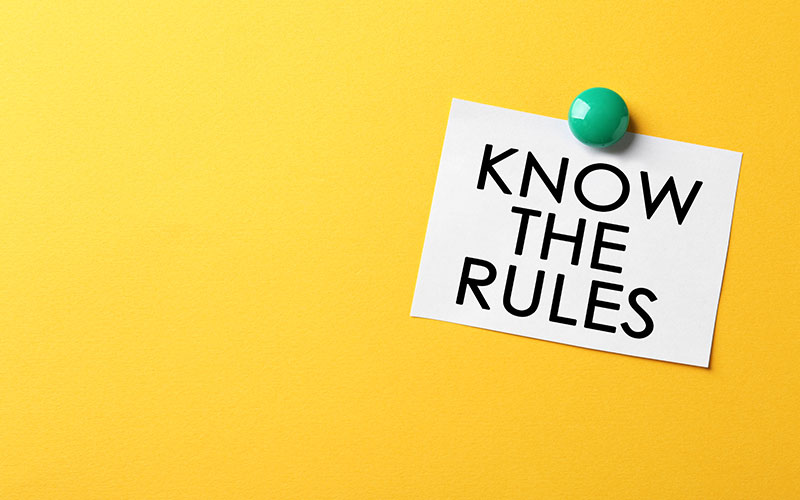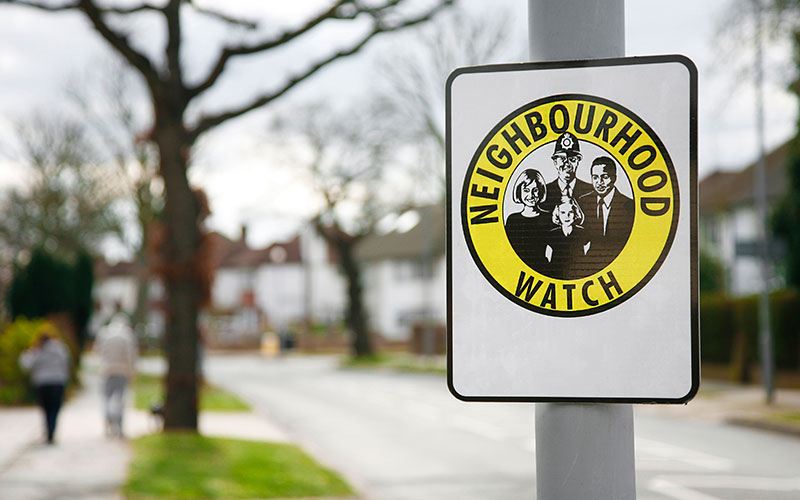Everyone wants to live somewhere they know will be safe no matter what time of day. But such neighborhoods don’t just spring up overnight, nor do they just happen to people. Rather, those that live in one area have to start working together to build the kind of safe place they dream of.
There’s nothing wrong with simply keeping an eye out and then informing neighbors when you spot something or someone that could threaten your area’s safety. Creating a neighborhood watch is a smart move, but here’s what you need to know to make one.
What Is A Neighborhood Watch?
The National Sherriff’s Association, or NSA, originally started the National Neighborhood Watch (NNW) program in the late 1960s as a way to combat rising crime rates. It has since grown into an American institution and is, in a way, homeland security at the most local level.
As the name implies, a neighborhood watch program involves a group of people living in the same area who want to “watch” their community to make it a safer place for all those living there.
They don’t work independently of local law enforcement but in conjunction with them, whether by becoming the contact persons in certain areas or by being first responders in certain events (e.g. if they see a road accident in the neighborhood).
How to Create a Neighborhood Watch
As appealing as this program sounds, not everyone knows how to establish a neighborhood watch. The good news is the more people you know who are interested in keeping your neighborhood safe, the better your chances of success.
Step 1: Spread Information and Gather People

If you don’t think you have enough people to create a neighborhood watch, you can spread information and get more neighbors involved by holding a launch meeting at a local gathering place. This can be your community recreation center, a clubhouse, or even someone’s home.
Other ways to spread information include handing out flyers, going door-to-door, or spreading the word through a social media account.
Step 2: Discuss Community Concerns
While different neighborhoods face the same kinds of security concerns, not all of them will want to focus on the same ones. For example, one neighborhood might be more concerned with general suspicious activity, while another will want to focus on decreasing the number of thefts.
That’s why your first meeting should focus not just on how to become a neighborhood watch but also on what your neighborhood’s top security and safety concerns are. Once you know what people are most concerned about, you can work together to develop an action plan to combat those concerns.
Step 3: Hold Neighborhood Watch Training Sessions
Knowing how to do a neighborhood watch starts with training so that everyone involved will know how to act in certain situations.
Remember to involve local law enforcement, too. Have an officer or two provide tips and guidelines on what makes a successful neighborhood watch. They can also teach you how to tell when someone’s acting suspiciously, compared to someone who’s genuinely in distress.
Working with law enforcement will also help you learn when the neighborhood watch group has to spring into action – and it’s not all about stopping crime. For example, such a group can let people in the community know about traffic accidents nearby or if there’s been a chemical spill.
You’ll also learn what other threats to look out for. For example, some neighborhoods may be more prone to acts of nature (e.g. tornadoes), while others will have to look out for dangerous wild animals such as cougars.
Step 4: Establish Rules and Duties

Deciding on neighborhood watch rules and duties will help you know what roles each person has and what they’re responsible for. Typically, there are three roles in any neighborhood watch group:
- Block Captain. Optimally, there should be one for every 10 to 15 houses. A block captain is a liaison between the group coordinator and residents in their block, compiling a list of names, addresses, and telephone numbers, and inviting new residents to join the program.
If someone on the block will be out of town for some time, it’s up to the block captain to assign people to take care of that person’s property by watering plants, taking out the trash, etc. This is to avoid advertising that there’s actually no one at home.
- Neighborhood Watch Coordinator. The coordinator is the liaison between the neighborhood watch group and local law enforcement and civic groups. This individual is also responsible for helping develop specific crime prevention projects and arranging for training programs if the need for them arises.
- Citizens’ Advisory Board. In neighborhoods that are rather large or in places where there are multiple neighborhood watch programs, law enforcement may choose a core group of citizens to act as the advisory board. This will help neighborhood watch coordinators and law enforcement liaisons keep up with all their responsibilities.
The advisory board will also be responsible for helping new neighborhood watch groups get off the ground and bringing emerging issues to the larger community’s attention.
Step 5: Take Note of Your Security Measures
When you create a neighborhood watch, it isn’t to take the place of a home security system. Instead, these systems are supposed to help improve the neighborhood watch. So if you don’t have a security system, consider investing in one.
The more households with security systems in place, the better for your community’s safety, and the better it will be for your neighborhood watch. It’s not just so you can compare features and see which systems are best for your area, but so you can also inform each other of attempted break-ins and thefts.
Conduct a safety audit of your home and urge those involved in the program to do the same. Then, share the results the next time you meet. Remember to take note of any upgrades you have to make, from installing motion-sensor lights to changing door locks.
Step 6: Get All Neighbors Involved
No matter the size of your neighborhood watch group, there may be households that aren’t part of it. Remember that you learned how to form a neighborhood watch to keep your community safe, and that means including even those households that aren’t in the group.
Are you putting together a directory of phone numbers to call should emergencies arise? Get the numbers of those households or families, too. If you’re holding a neighborhood get-together to be more acquainted with each other, involve those families as well.
The more you know your neighbors, the more prepared the neighborhood watch group will be, and they’ll be able to easily tell when something doesn’t seem right.
Plus, getting to know all your neighbors will be especially helpful in protecting others from such things as discrimination, which is just as much a threat to safety as any thief.
Step 7: Keep the Watch Going
Instead of asking, “How do you set up a neighborhood watch?” you should also consider how you’ll ensure everyone stays involved once the program is up and running.
For instance, you can hold regular meetings, each one focusing on topics related to safety and security. Take this a step further by having a different neighbor host each meeting so that everyone feels a sense of responsibility for the effectiveness of your neighborhood watch.
You can also create a group chat or group text alert system. This will make communication easier and help you keep each other updated on neighborhood activity. If someone will be out of town, you’ll know to be particularly vigilant regarding their property.
If you use a neighborhood safety plan to help you monitor how effective the program is, update it regularly as you meet safety goals. This way, you can keep improving the program and therefore increase neighborhood security.
Benefits of a Neighborhood Watch

Neighborhood watch activities are as varied as the neighborhoods that hold them, but one thing all groups have in common is their commitment to raising safety awareness, thus minimizing crime and other threats to security in their areas.
Besides crime reduction, other benefits of a neighborhood watch include:
- Increased sense of personal control over security
- Better community relationships
- Improved relationships with local law enforcement
- Better quality of life overall
Neighborhood Watch and Safety
As you can see, you and your neighbors stand to gain a lot in terms of your collective security if you create a neighborhood watch. So if you want to get started, reach out to law enforcement in your area for more information and guidance.
You Can Also Read These:
- How To Volunteer At A Local Red Cross As An Individual And As A Community
- Start A Community CPR Training Program And Save Lives
- Bond With Food: How To Start Community Cooking Sessions In Your HOA




